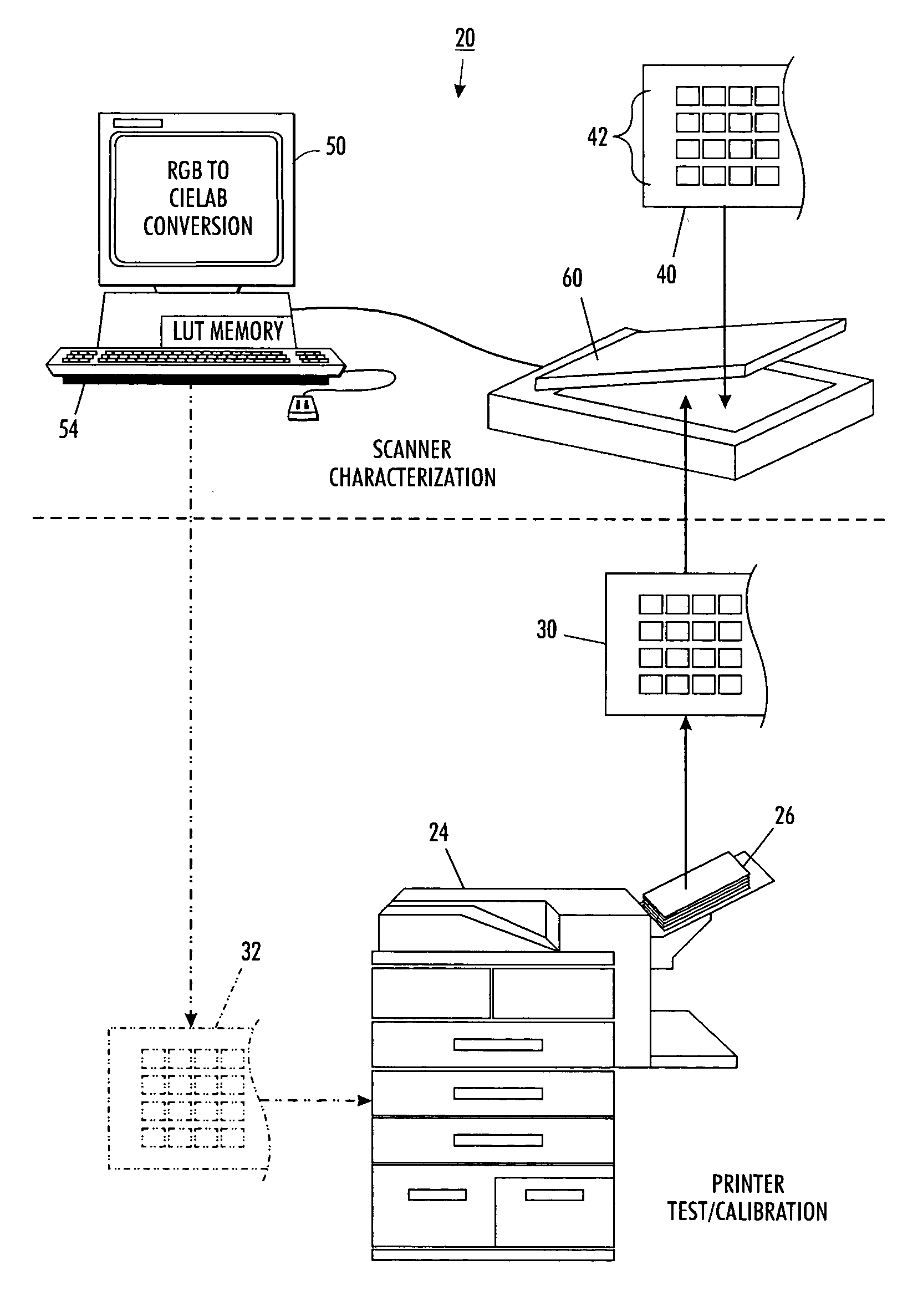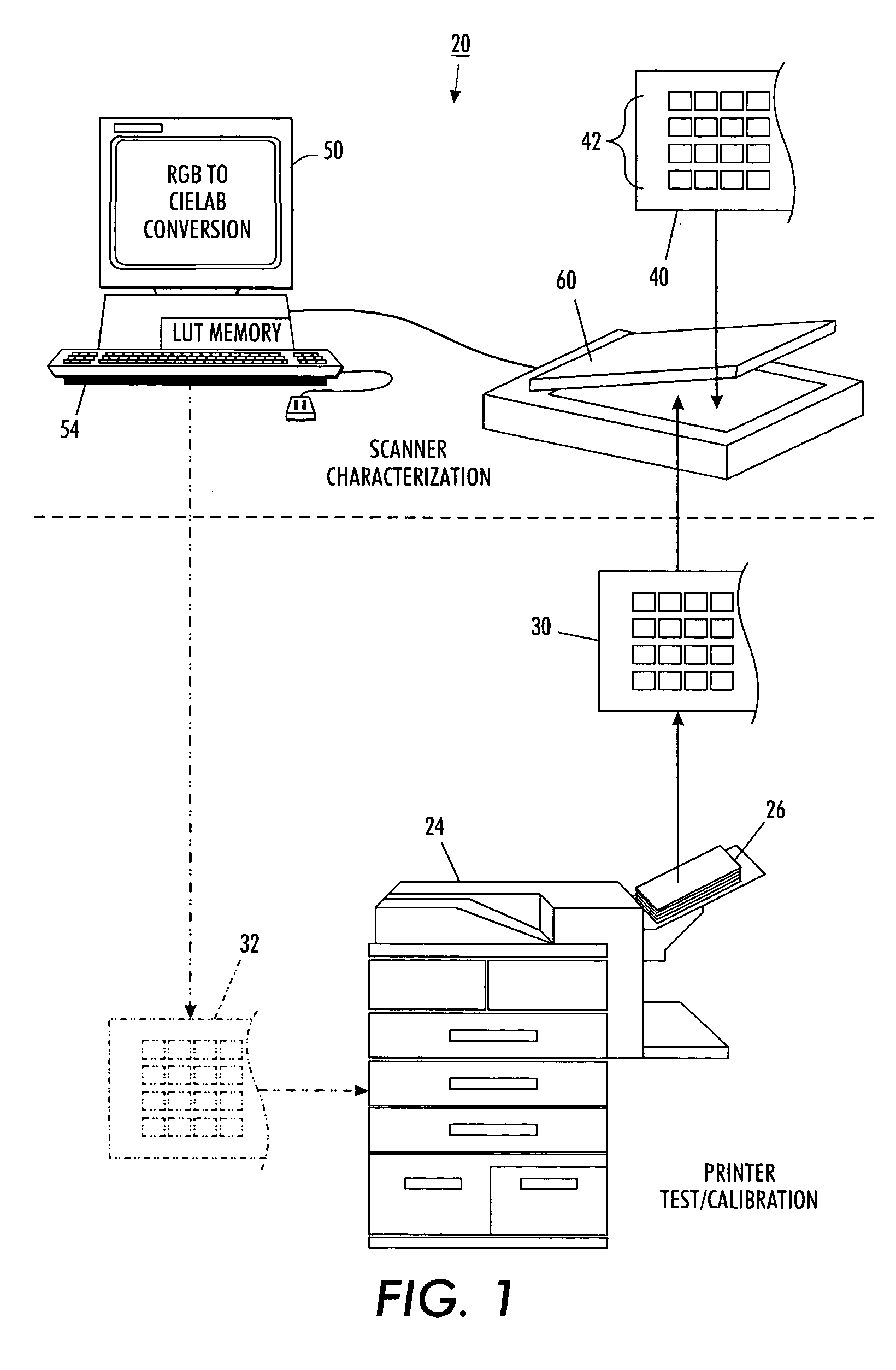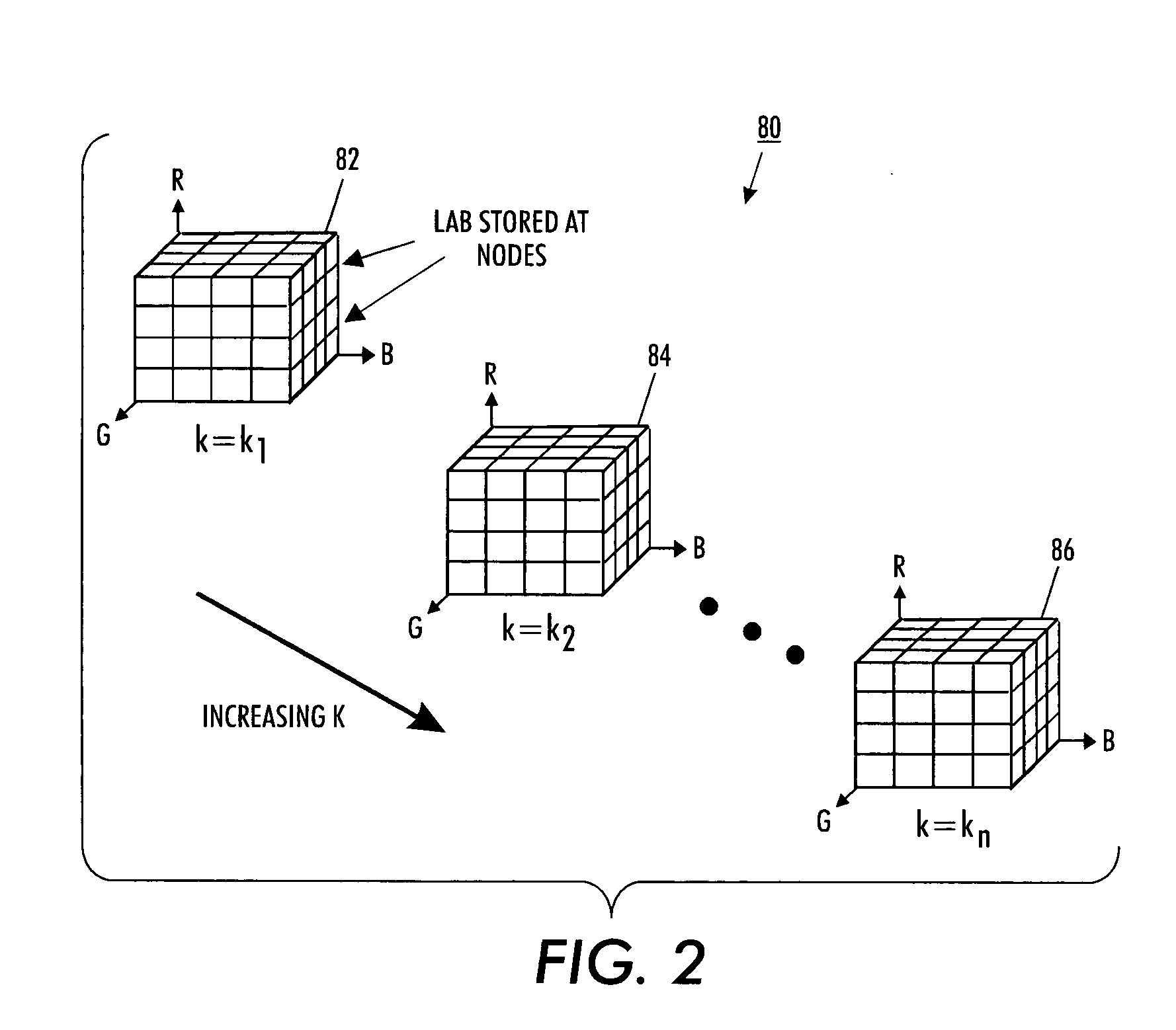Method for scanner characterization for color measurement of printed media having four or more colorants
a technology of color measurement and scanner, applied in the field of characterizing digital image scanners, can solve the problems of limiting the use of these applications of colorimetric scanners, ucr/gcr strategies optimized for pictures do not account accurately for such colorant combinations, and typical scanners provide only mediocre colorimetric accuracy, so as to improve the characterization and accuracy of the scanner. , the effect of improving the characterization of the digital image input terminal
- Summary
- Abstract
- Description
- Claims
- Application Information
AI Technical Summary
Benefits of technology
Problems solved by technology
Method used
Image
Examples
Embodiment Construction
[0028] For a general understanding of the present invention, reference is made to the drawings. In the drawings, like reference numerals have been used throughout to designate identical elements. In describing the present invention, reference will be made to various examples using cyan, magenta, yellow and black (CMYK) colorants to describe the invention. Generalization to other additional colorants is straightforward, however, and the use of particular examples using CMYK is not intended to limit the scope of the invention. In describing the present invention, the following term(s) have been used in the description.
[0029] The term “calibration” refers to 1-D tone reproduction curves that bring the device to a known state; while “characterization” refers to the multidimensional transform that relates device-dependent to device-independent color.
[0030] An item of data “defines” an image when the item of data includes sufficient information to produce the image. For example, a two-d...
PUM
 Login to View More
Login to View More Abstract
Description
Claims
Application Information
 Login to View More
Login to View More - R&D
- Intellectual Property
- Life Sciences
- Materials
- Tech Scout
- Unparalleled Data Quality
- Higher Quality Content
- 60% Fewer Hallucinations
Browse by: Latest US Patents, China's latest patents, Technical Efficacy Thesaurus, Application Domain, Technology Topic, Popular Technical Reports.
© 2025 PatSnap. All rights reserved.Legal|Privacy policy|Modern Slavery Act Transparency Statement|Sitemap|About US| Contact US: help@patsnap.com



